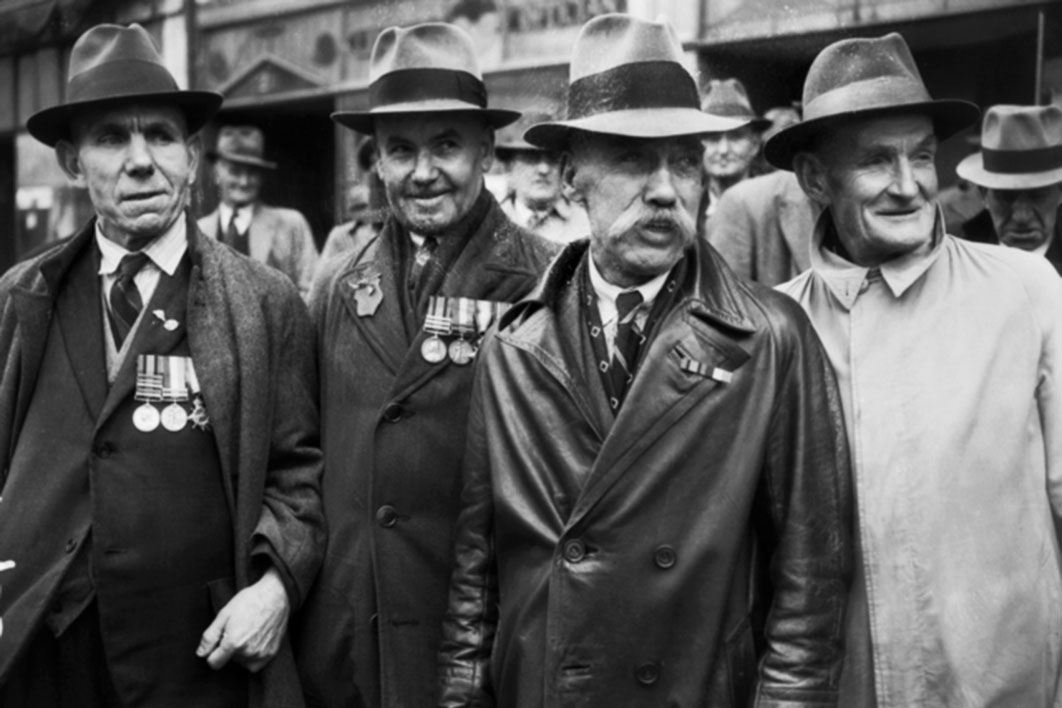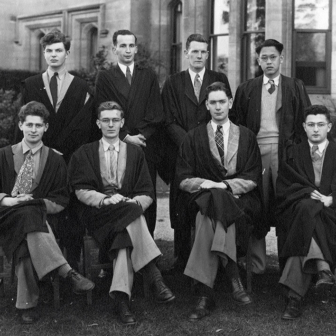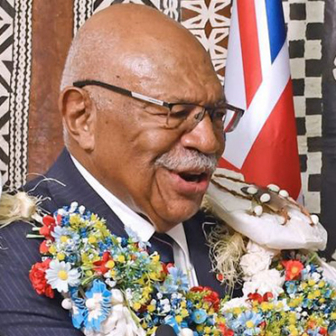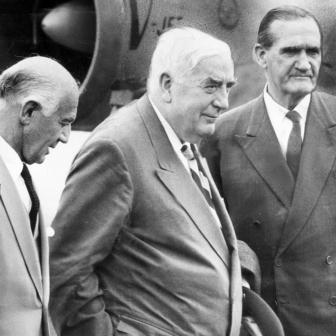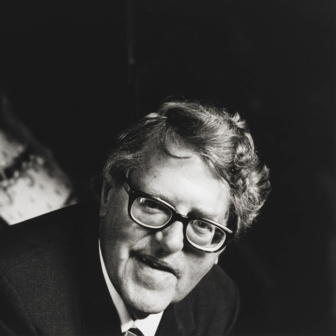Anzac Day is a fixed moment of season and a day of remembrance with shifting meanings. The leaves turn with the autumn, the chill begins, the football launches, and then it’s 25 April, the day of The March.
The March stands for a lot of things. The medals come out and the old comrades assemble for the annual parade to mark their memories. For me, as a child in the 1950s and a teen in the 1960s, it meant Melbourne’s St Kilda Road, leading to the Shrine. We clapped loud for my father and his revered and raucous Ninth Division mates, still striding in step like the young soldiers they’d been. We knew that this was the magnificent Ninth. They swaggered again.
The applause was different, gentler, for the slow-moving, ghostly ranks of my grandfather’s division of original Anzacs.
As the 1950s turned into the 1960s, I vaguely grasped the tensions and the divides, and even the politics that swirled beneath Anzac Day. Many of the conflicts of meaning and memory have since faded. The original Anzacs are all gone. And most of the sons of Anzac who marched off to the second world war march no more.
My father’s generation grew up knowing the Anzac legend in intimate ways. The original Anzacs stood before them as fathers and uncles — or stared down at them as pictures and medals on the mantle, amid the souvenirs of France. In the 1920s and 1930s, many were taught the legend as a defining expression of Australia as a new nation. Others got the opposing story of a massive waste — sometimes from the lips of those original Anzacs.
The understanding of Anzac Day is ever contested. Yet the divides across Australian society are no longer as vivid or as powerful. Today’s Anzac Day more easily aligns personal remembrance, Australian identity and political purpose. And perhaps the politics doesn’t throb as forcefully.
Not least, previous struggles about Australian identity are forgotten. Consider what was once a hallowed term, as important in its way as Anzac: the Australian Imperial Force. My mum’s father was in the First AIF, my father in the Second.
For my father, the sense of continuity was as much about the Australian Imperial Force as the Anzac legend. The AIF was an identity as significant as the slouch hat. When our military was named the Australian Defence Force in the 1970s, defence secretary Arthur Tange and his political masters well understood which bit of the tradition they were honouring and which bit had already died.
At its inception, the contest over the meaning and ownership of Anzac Day was the tension between Australian and imperial. For some, Australia and Empire were inextricably united. Others believed Australia had sacrificed her youth to unworthy imperial ends.
Mix into this the great political and sectarian divide that cut through Australia during the conscription referendums of the first world war, and ached for decades. For twenty-five years, Catholics were discouraged from taking part in Anzac Day as a “non-denominational” ceremony honouring the dead. As the journalist Jack Waterford notes, the chief Catholic military chaplain, Archbishop Daniel Mannix, saw Anzac Day as “forbidden to Catholics” and regarded the RSL hierarchy as “morally equivalent to high-grade Freemasons, which, of course, they often were.”
On its foundation in 1916, the RSL’s full title was the Returned Sailors and Soldiers Imperial League of Australia. Imperial meant British, and Archbishop Mannix wouldn’t nod to that, nor to the officer class at the top of the league. The RSL’s grip on Anzac Day meant a deeply conservative organisation wielded a great Australian talisman through the twentieth century.
As a Protestant, my dad was on the other side of the sectarian divide. While he laughed at the RSL when it was in jingo mode, he served on RSL committees for many years and was a proud life member. He thought the league did more good than harm. When old mates were in trouble, it was a network that could be quickly mobilised.
The imperial versus Australian struggle is absent from today’s understanding of Anzac. That shift, from a British to an Australian identity, can be traced through the life of Charles Bean, the scribe who inscribed the Anzac legend on the official history of the first world war and helped create the War Memorial in Canberra.
In Ross Coulthart’s fine biography, Bean starts out as the most jingoistic of Britons, thrilled by imperial might and notions of British racial superiority and purity. “Despite this,” writes Coulthart, “what is intriguing about Charles Bean is how his personal life story tracks the origins of Australian nationalism. Over the coming decades, his own growing sense of Australian self-identity would transform so much of what he and all Australians had once so passionately believed.”
The journey from imperial to Australian is part of the story of how the meaning of Anzac Day has been remade, becoming less overtly political or even geopolitical.
The annual moment of memory has evolved. And what we remember has changed. The imperial element has faded from the commemoration of the Australian Imperial Force in the first and second world wars. In the way the Anzacs are remembered today, you’d hardly know they served British commanders on a British mission. Now they are honoured as Australians embodying an Australian ethos.
The slouch hat mystique means today’s Australian Defence Force inherits much from the Anzacs. But the public understanding sees the Anzacs as having enlisted in the Australian Defence Force, not the AIF.
Anzac Day has buried the British dimension. The idea of the Australian Briton has been interred along with the Empire. To see the shift, come join me for a 1950s memory at Carrum State School in Victoria. Every Monday morning, we assembled for a rendition of “God Save the Queen” and recited the National Salute as Victorian state school kids had since 1901:
I love God and my country,
I honour the flag,
I serve the Queen,
And cheerfully obey my parents, teachers and the law.
We used to zoom through that final “cheerfully obey” line like a bunch of staccato chooks.
The concept of Australian Britons echoed through my Monday assembly. Serving the Queen seemed a natural enough commitment to be grouped with God and flag — all obeyed with a smile. Even as those sentiments were being affirmed to us kids, the imperial settings had been blasted out of Australian geopolitics. The nation with its own continent could find all the identity it needed in the wide brown land.
As Britain’s power waned, so did the once-powerful characteristics of the Australian Briton. Anzac Day’s exclusively Australian identity expanded to take the whole space of memory.
Date the final sunset of the Oz Briton as the moment Sir Robert Menzies retired as prime minister in 1966. He left not long after provoking mirth by proposing that when Australia abandoned pounds and shillings, the new note should be called the royal. Allegiance had shifted, and we adopted the dollar instead, to honour the replacement great-and-powerful ally.
Popular culture reflected the elevation of the Australian qualities and disowning of the imperial mission. In movies like Breaker Morant and Gallipoli, the British officer class was bludgeoned. Just recently, The Water Diviner portrays a Turkish commander at Gallipoli as a far more sympathetic character than the arrogant Pom officer who tries to thwart the hero’s search for his dead Anzac sons.
As a Vietnam-era movie, Gallipoli was also making a point about going to war on behalf of the great ally, new or old. An enduring continuity is the debate about the cost of serving the alliance.
The public usage today has many elements that would jar with the quasi-religious remembrance of earlier generations: Anzac Day football would have been as sacrilegious as the once taboo idea of playing footy on a Sunday.
We still play two-up after The March, but much else of that society has gone. No memory now of the dry decades when Victoria’s pubs closed at 6pm, a discipline imposed during the first world war that persisted for fifty years as an emblem of Oz wowserism.
In earlier eras, The March, as much as the six o’clock swill, was private men’s business. Australia saluted Anzac Day and then stood back as the returned comrades gathered to drink and commemorate and, for a moment, share the nightmares as well as the memories.
Anzac Day mattered to my father in complex ways. With the Ninth Division, he’d taken a bit of shrapnel in the head during El Alamein and been back on the line within a week. He served in the landings at Lae, Finschhafen and Tarakan. By Tarakan, he remembered, the veterans thought the war would never end. Not many of the original division would still be going if they had to fight all the way to Tokyo.
My mother dreaded Anzac Day. It meant the nightmares were likely to recur. Often it was the Japanese and the jungle.
The Vietnam veterans cracked the code of silence bequeathed by men from the AIF. Or, perhaps, the Australian society was ready to listen to the Vietnam vets in ways that they could not bear to hear from the AIF. The change is reflected in the different tone of Anzac Day; it was no longer secret blokes’ business.
Because of the Vietnam vets, my father got an incredibly valuable benefit from Vet’s Affairs. He talked to a psychiatric counsellor about his nightmares and gained new insight into the demons he’d so successfully fought in a career as a teacher and husband and father. The memories he’d tried to confine to Anzac Day were re-examined and re-explained.
After that, he agreed to take out his medals occasionally and go to talk to groups of schoolchildren at the War Memorial in Canberra. It was the action of a born schoolteacher who served the Victorian Education Department with devotion equal to what he had given the Ninth Division.
Those talks to kids at the War Memorial about the experience of war and remembrance were a sign that the memories didn’t strike so harshly – and so he was able to take my son to a dawn service. Towards the end, my father managed to change his personal meaning of Anzac Day, just as Australia has reshaped its understanding of what we mark on 25 April. •
